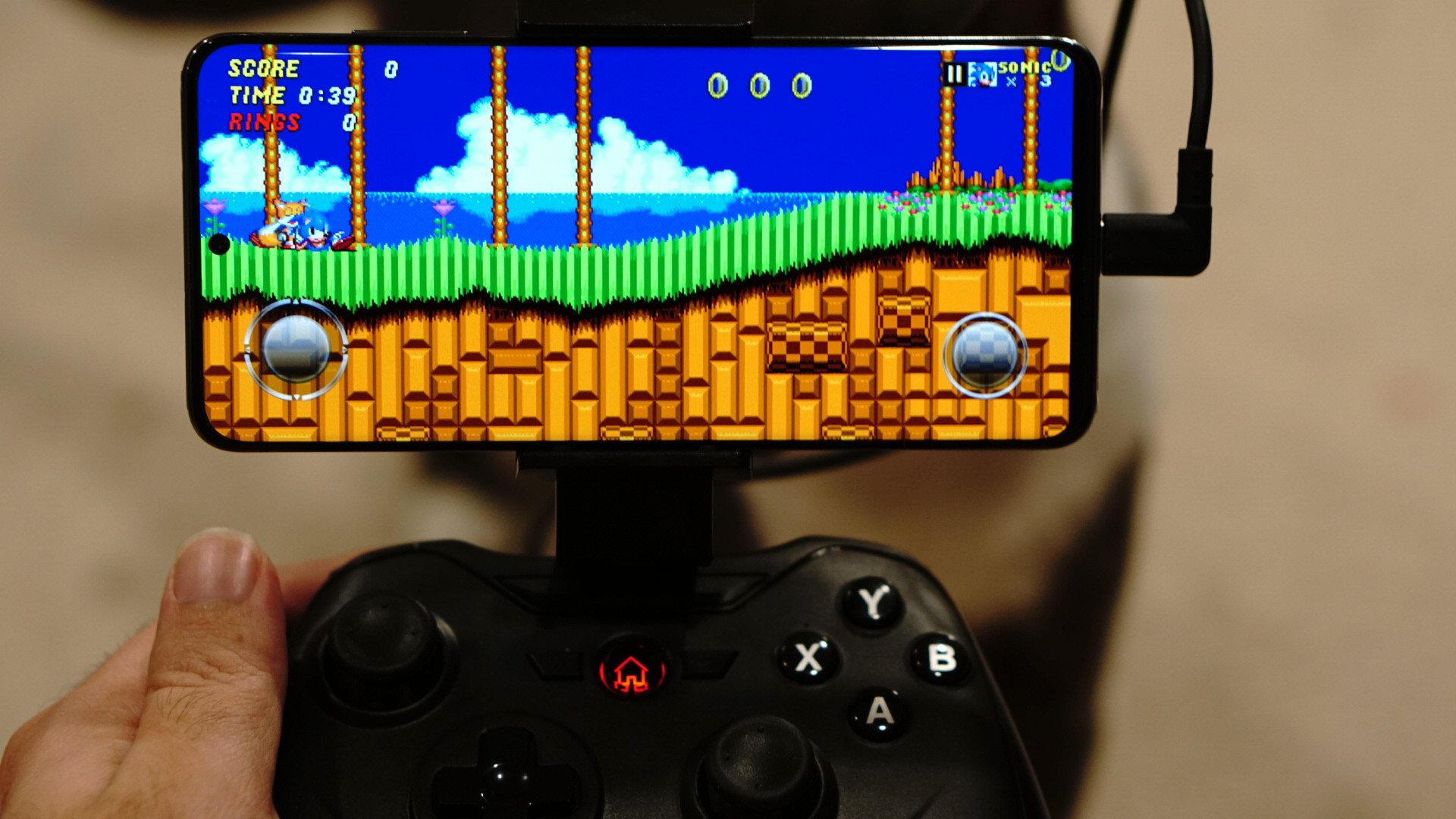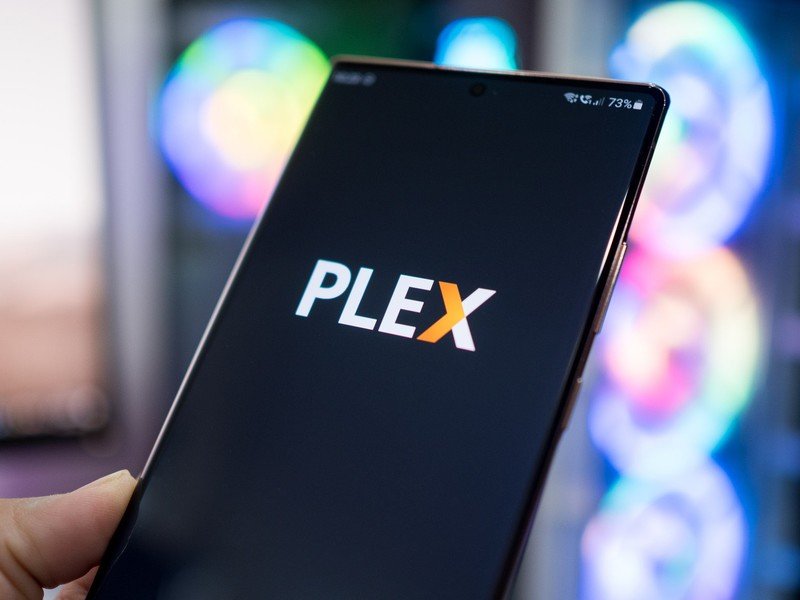Android Central Verdict
Bottom line: The Rotor Riot keeps a reliably firm grip on your Android phone, but you may have to place it off-center to avoid accidental button presses. The long USB-C cord may dangle a bit while gaming on the road, but it ensures it'll reach any charging port easily. The ergonomic, well-designed controller works quite well for cloud gaming and some compatible Android games, but the D-pad disappoints. Overall, you'll enjoy the lack of latency and passthrough, but this model isn't without its issues.
Pros
- +
Plug-and-play
- +
Comfortable grip, sticks, and triggers
- +
USB-C passthrough with low latency
- +
Grip should fit any Android phone
Cons
- -
Phone grip presses down on buttons, can't be angle-adjusted
- -
No haptic feedback
- -
Poor, squishy D-pad
Why you can trust Android Central
An increasing number of Android games include controller support these days, but choosing the right Android controller can be a finicky process. Bluetooth controllers usually lack a phone grip, require frequent recharging, and add a bit of latency to games. USB-C controllers with a grip eliminate that latency but are heavy and usually incompatible for non-mobile gaming.
RiotPWR specializes in "latency-free" USB-C controllers (or Lightning, in the case of its iOS models) with a full configuration of buttons and triggers, including L3 and R3. The new Rotor Riot Controller for Android will comfortably hold any Android phone in its rigid sandwich grip, though you have to be careful about side buttons or squeeze gestures when attaching it. Once you plug its cord into your phone, it'll work straight away without any configuring — assuming, of course, that the game is compatible with the controller.
The Rotor Riot Android Controller works well for anyone who wants a Game Pass or Play Pass accessory with no fuss. But it does have its downsides compared to the best Android gaming controllers.
Rotor Riot Controller for Android: Price and availability
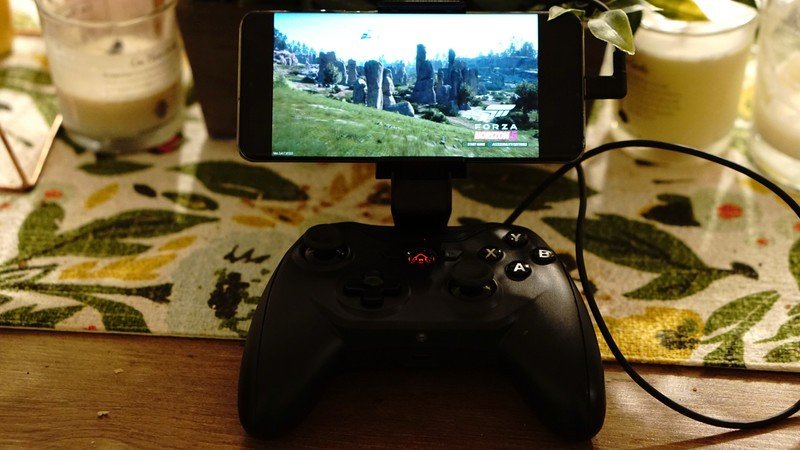
The Rotor Riot (RR1825A) Controller for Android launched in July 2020 for $50. RiotPWR originally released a different Rotor Riot Android controller in late 2018, and the company hasn't made it clear what the differences are between the two. If you own an iPhone, you can buy the iOS version; it has the same controller scheme and design and ships for the same price, but uses a Lightning connector instead.
Rotor Riot Controller for Android: What you'll like
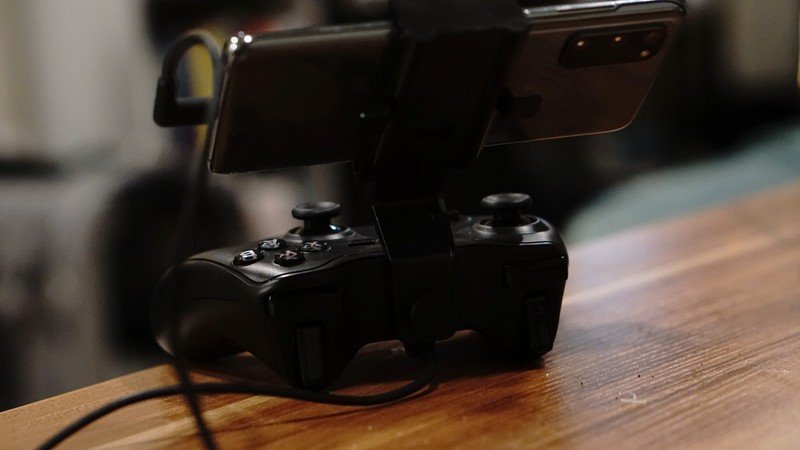
RiotPWR didn't overcomplicate things with the Rotor Riot design. You don't have to worry about Bluetooth connectivity, a mandatory app download, or checking phone compatibility. All you do is pull the grip open vertically, slot your phone inside, then plug the connected USB-C cord into your phone's charging port. Just like that, the Rotor Riot will work with most controller-compatible Android games by default.
The controller runs off of your phone battery to work, with the center button lighting up red once active. Thanks to the slot on the controller bottom for USB-C passthrough, you don't have to worry about keeping this charged separately, nor about your phone dying during a long gaming session.
RiotPWR chose a standard Xbox controller-esque button map for its controller, so you don't need to worry about any buttons corresponding to the wrong input. I personally prefer the left-thumb-high/right-thumb-low style, which made the Rotor Riot a solid alternative for me, but fans of PS5 or Switch controllers may have a different impression.
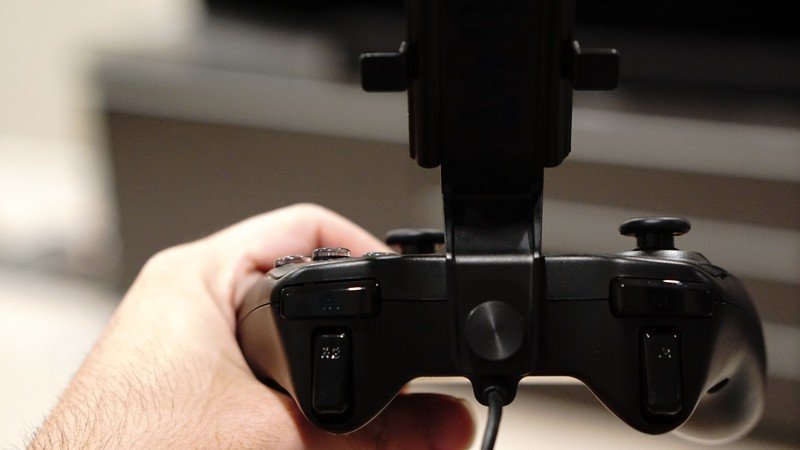
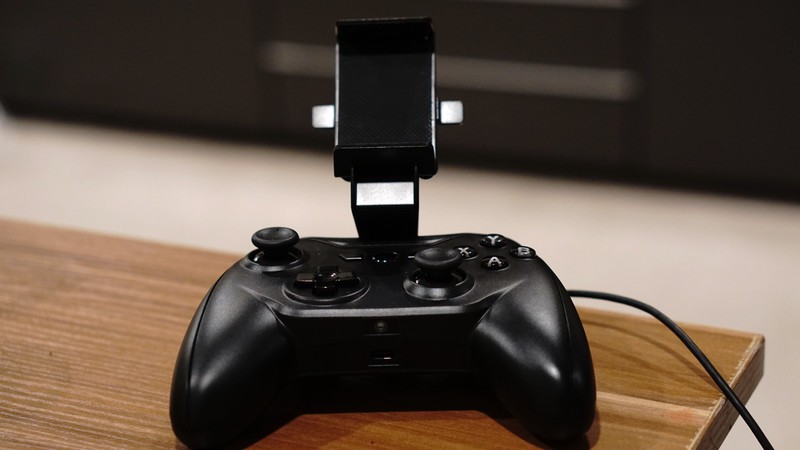
Source: Michael Hicks / Android Central
Testing the Rotor Riot across several days, both for Game Pass for Android and Google Play Pass, my overall experience was quite positive. Comfort-wise, the grips may lack the texture of a more advanced controller but at least give your hands proper spacing, where smaller controllers like the Kishi or 8Bitdo make your hands clench a bit.
Aside from the shoddy D-pad, the buttons and triggers had the right amount of resistance and squishiness to feel natural. I'd rate the thumbsticks as slightly worse than what I'm used to with other controllers for precision aiming in Halo Infinite, but it's by no means bad. It just took some mental adjustment, and non-FPS action games like Dead Cells felt as natural as could be.
I have some gripes with the phone grip to work out in the next section, but to give it the credit it's due, the Rotor Riot feels fully secure. You won't feel like your phone has any chance of slipping out unless you drop the whole controller. Plus, you can technically use this controller with an Android tablet and unattach the grip if you prefer, whereas other USB-C controllers like the Kishi might only work with a phone.
Rotor Riot Controller for Android: What you won't like
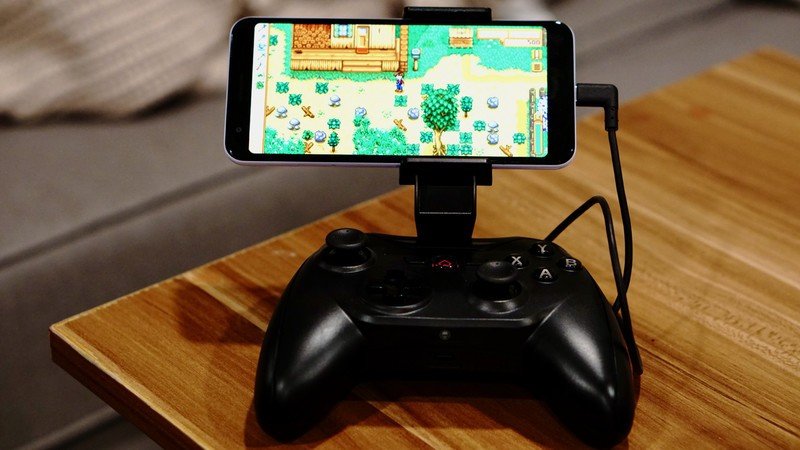
Phone grips like the Rotor Riot and Razer Raiju Mobile have a consistent issue: they slot down hard on the sides of your phone, meaning they'll press down on whichever button is in your phone's center. For my Galaxy S20, that was the power button, so attaching the grip brought up the power menu. With my Pixel 3a, it kept turning the volume up to max, but when I shifted the grip to the right to avoid the button, it activated the squeeze gesture instead.
In general, I'm worried about using this long-term, as clamping the grip on or extricating the phone from its vise consistently is liable to mess up my phones' buttons if I'm not careful.
Plus, at least the Raiju phone grip lets you adjust the viewing angle up to 60-degrees up and down; the Rotor Riot has one fixed position that works well enough but doesn't give you any flexibility. I found it made it back-heavy when sitting on a desk, like it was ready to topple over. Given you'll need to use the touchscreen to navigate at times when the Rotor Riot isn't compatible, that can lead to precarious moments.
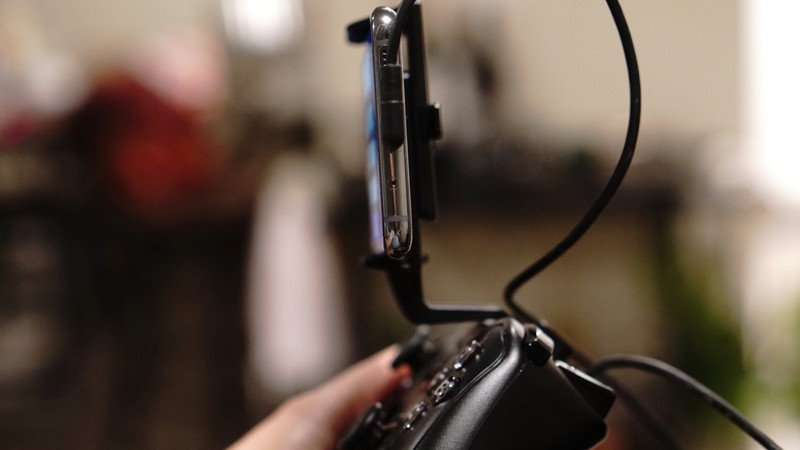
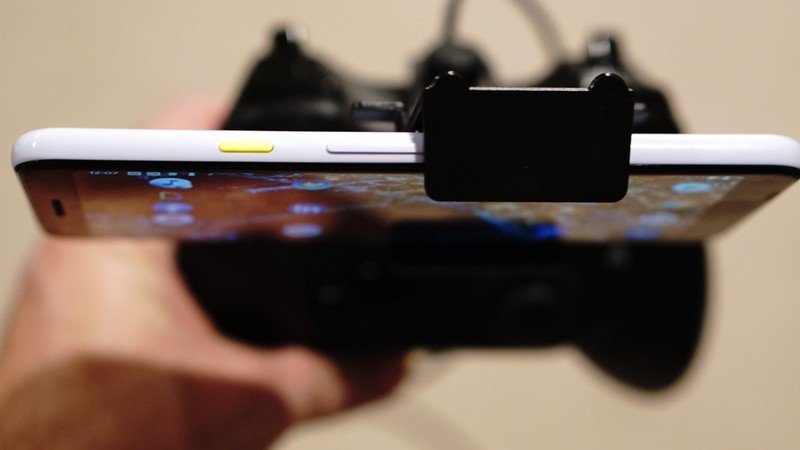
Source: Michael Hicks / Android Central
RiotPWR recommends you download the Ludu Mapp app to check its list of "400+ compatible apps" that are officially supported for plug-and-play. The app essentially links you to games to buy or download, but doesn't offer anything else like button mapping. I don't think that's strictly necessary, but some gamers prefer having that kind of versatility.
The bigger issue is the D-pad. It's frankly unusable, with too much squish for fast-paced games. I stuck fully to the thumbsticks, and you should be prepared to do so as well. For some 2D Android games, it's a frustrating problem not to be able to go old-school.
You won't find haptic feedback, either, which matters more for cloud gaming than Android gaming.
Rotor Riot Controller for Android: Competition
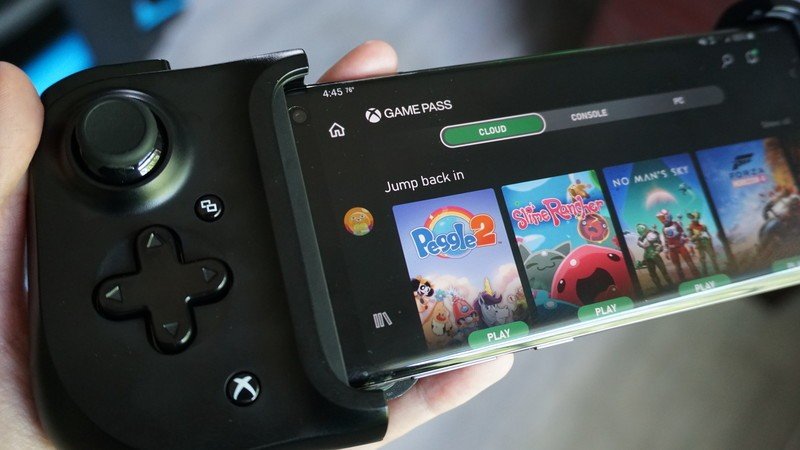
If you like the Rotor Riot's lag-free inputs and passthrough charging, but prefer a more compact Switch-like design, the Razer Kishi is the obvious choice. It slots your phone directly inside of it with the controls on either side, turning your phone into a handheld console of sorts — avoiding pressing down on any buttons. Just make sure that your Android phone is compatible first.
If you want a controller that works with more than just your phone, consider the SteelSeries Stratus Duo. It has an optional phone grip (sold separately, unfortunately) as well as a PC dongle for playing your favorite Steam games, with the "Duo" name referring to how quickly you can swap between inputs. It is Bluetooth, which means having to recharge it.
Rotor Riot Controller for Android: Should you buy it?
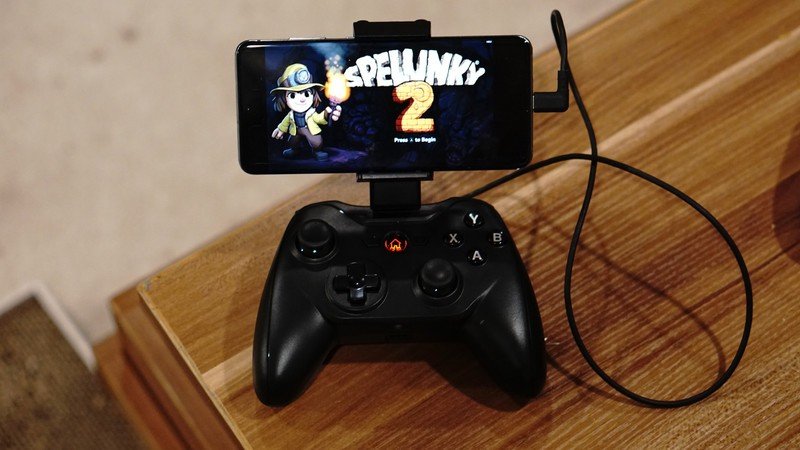
You should buy this if...
- You want a controller you can unbox and use with little effort
- You stream cloud games or play lots of controller-enabled Android games
- You don't want to keep a controller charged
- You like the Xbox button configuration
You shouldn't buy this if...
- You like using the D-pad for gaming
- You want a controller you can use for PC or console gaming
- You have a large phone that makes a traditional phone grip back-heavy
If the Rotor Riot Android Controller has one main weakness, it's that you have to carefully attach the grip every time to avoid issues with the volume or power buttons. But once it's attached, it's a perfectly functional controller that thankfully doesn't rely on the useless tie-in app to work. If that sounds appealing, the controller costs a bit less than many competing brands, most of which require Bluetooth connections and frequent recharges.
3.5 out of 5
I enjoyed my time with the Rotor Riot, and so will people who like phone grips. I do think a Kishi-style gamepad that slots directly into your phone will appeal more to some gamers, but you can at least be certain the Riot will work with phones and tablets that the Kishi cannot. It's not the most attractive or premium-designed controller, but it gets the job done.
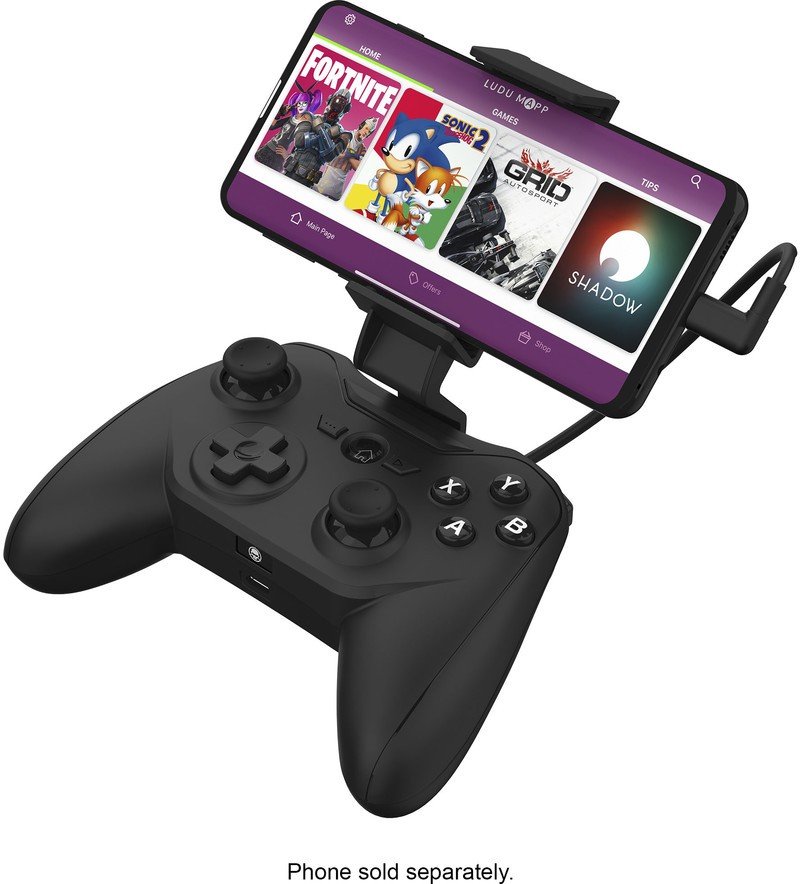
Rotor Riot Controller for Android
Bottom line: Want a controller with a built-in phone grip, a standard button map that works with most Android or cloud games with no tinkering, and low-latency USB-C? The Rotor Riot may be the controller you're looking for.

Michael is Android Central's resident expert on wearables and fitness. Before joining Android Central, he freelanced for years at Techradar, Wareable, Windows Central, and Digital Trends. Channeling his love of running, he established himself as an expert on fitness watches, testing and reviewing models from Garmin, Fitbit, Samsung, Apple, COROS, Polar, Amazfit, Suunto, and more.
